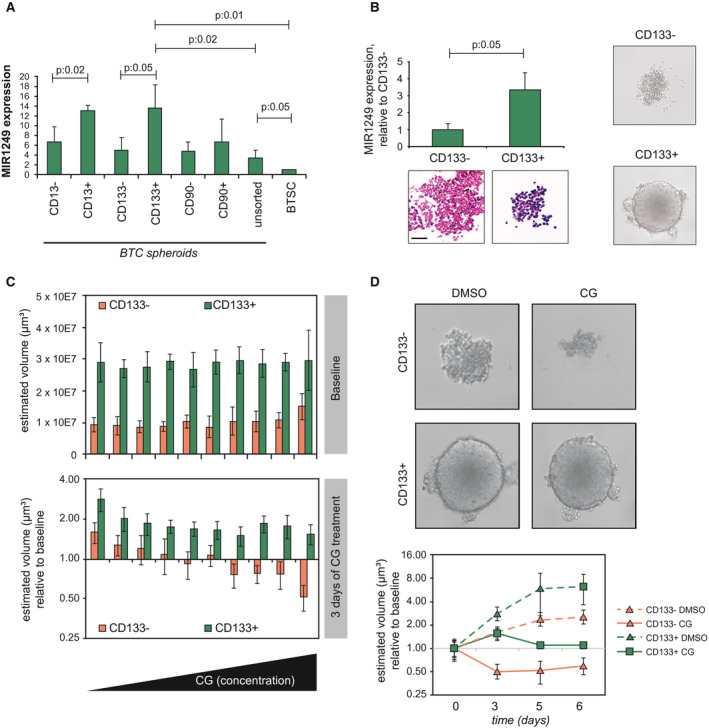Figure 3.

Human CD133+ BTC cells hold high MIR1249 levels and are highly chemo‐resistant. (A) CSC niche of human BTC samples was identified. Cells were then extracted, sorted by cell surface markers, and cultured in 3D spheroids. MIR1249 expression was assessed by TaqMan assay. Bars indicate three independent replicates ± SD. (B) CCLP‐1 cells were sorted by FACS for CD133 surface expression. MIR1249 was assessed both by TaqMan (bars indicate the mean of three independent experiments ± SD) and by ISH (representative pictures are shown; scale bar: 100 μM). (C) When cultured in ultralow attachment plates, CD133+ cells formed large and defined 3D spheroids conversely to CD133‐ cells. (C) CCLP‐1 cells were sorted for CD133 surface expression and cultured in ultralow attachment plates. After 5 days, baseline imaging of spheroids by Celigo showed reproducible spheroid formation across the plates, even though CD133‐ spheroids were smaller. After 3 days of CG treatment (scalar concentrations up to 3 μM cisplatin and 30 nM gemcitabine), CD133‐ spheroids shrank in volume, whereas CD133+ spheroids did not, even at the highest CG concentration. Bars represent the mean of six replicates ± SD. (D) Representative pictures of spheroids with and without CG treatment. Spheroids were monitored up to 6 days. The volume of CD133‐ spheroids decreased from baseline, whereas the volume of CD133+ spheroids was stabilized (see also Supporting Fig. S2). Abbreviation: BTSC, biliary tract stem cells.
